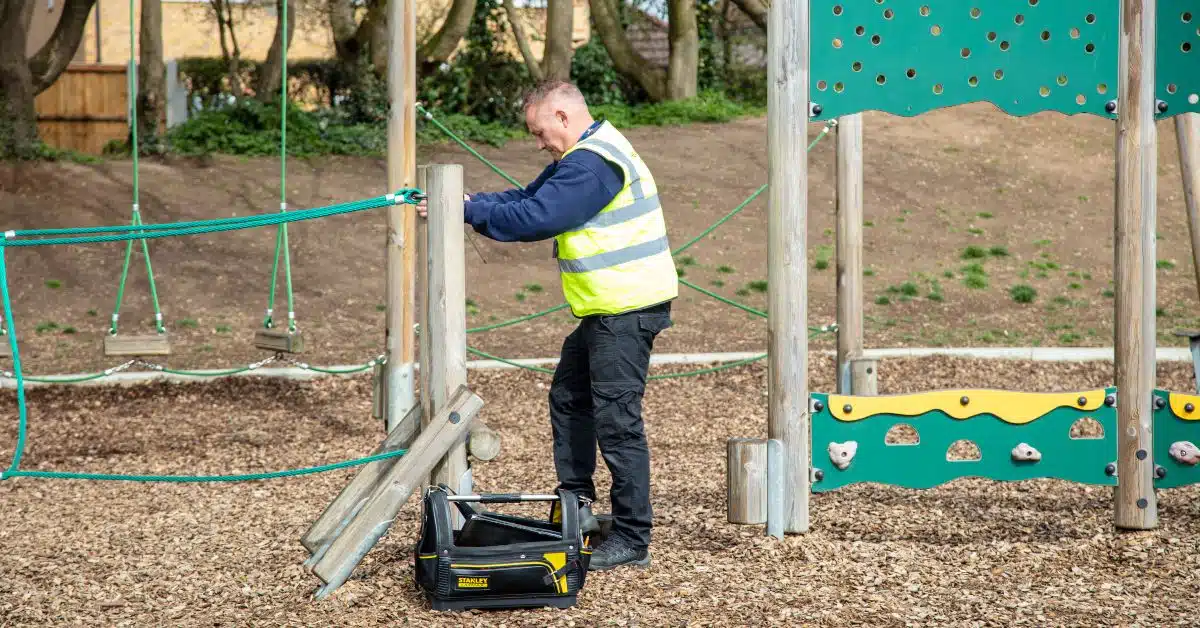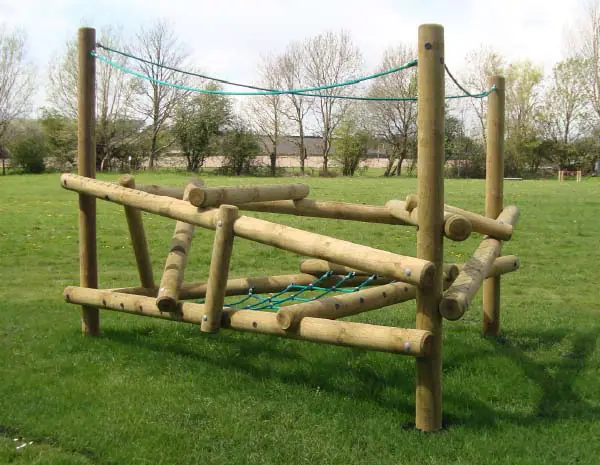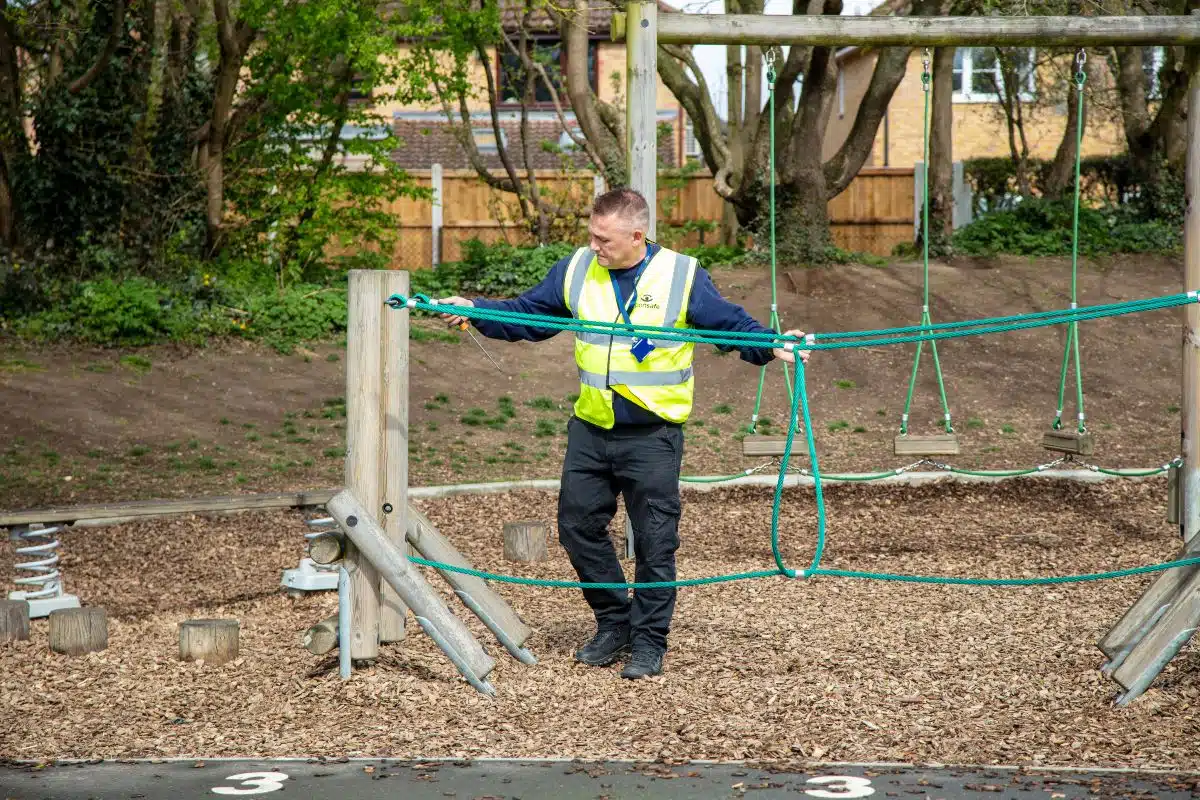Doing ‘The Time Warp’ might be fun for ‘The Rocky Horror Show’ audience… but watching the wood warp is a horror no one wants when it comes to outdoor play and sports equipment.
Natural wood is a marvellous material – versatile, strong, attractive and (when properly managed) sustainable, recyclable and biodegradable. Climbing frames, trim trails, outdoor classrooms, imaginative play features, play towers and clamber stacks all look fantastic in wood and can last years.
However, much like anything of quality in Life, to reap the benefits, you need to put in the care. Left to its own devices, a tree knows how to look after itself; it is possible that the oldest known tree is approaching 5000 years. The moment humans intervene and start processing this natural phenomenon, expertise in production, craftmanship and aftercare is essential.
As a living material, wood reacts to its environment in a way that its synthetic counterparts cannot. Core to this is the interaction between wood and water.
‘Wood is a hygroscopic material, which means it absorbs and releases moisture from its environment. When the moisture content of wood changes unevenly, it causes the wood fibres to expand or contract in different directions.’ (Source: https://www.intouch-quality.com/blog/wood-warping-and-how-to-prevent-it)
The key to keeping wooden equipment ‘happy’ lies in enabling it to settle into its environment. Understanding the effect of the Equilibrium Moisture Content (EMC) – when the moisture outside and that of the wood content are balanced – can make all the difference. Basically, ambient moisture makes wood swell whilst lower ambient moisture makes wood grains shrink.

‘Wood is a natural material and cracking is natural …Cracks normally appear due to a differential rate of drying out of wet wood…If wood which has a similar moisture content to the natural surrounding is used, cracking is greatly reduced.’ (Source: ROSPA)
Furthermore, wood species, thickness, grain orientation and ambient temperature also have an impact – so equipment design, location and installation need expert attention for ultimate success. Everyday observation and regular professional inspection are also vital as changes can happen quite rapidly, particularly now climate and weather can be so unpredictable.
‘Junctions between components, holes for fastenings and horizontal parts from which water is not easily shed can be at risk as they will maintain a higher than average moisture content…Water is also much more likely to get into wood through the end grain… Normally (cracks) will have no appreciable effect on the strength of the material. They should not exceed 10mm wide (in which case they can be a “finger trap” as defined by EN 1176)… Cracks normally appear due to a differential rate of drying out of wet wood.’ (Source: ROSPA)
Schools and activity providers must, therefore, ensure that all the wonderful benefits of beautiful wooden equipment are not ruined by injuries caused by finger traps and loosened joints as the wood naturally expands, contracts and reacts to its environment. Professional care is also advisable on a regular basis because some changes in the equipment stability is not always obvious to the untrained eye.
‘It is quite possible to find a beam whose exterior (treated wood) is intact, but whose middle (untreated) is rotten…It is essential to inspect the wood regularly.’ (Source: ROSPA)
In conclusion, what wooden play, activity and learning resources take in extra care for the original selection, installation and maintenance – they more than pay back in beautiful appearance, comfort of use, sustainability, long-term safety and durability.



